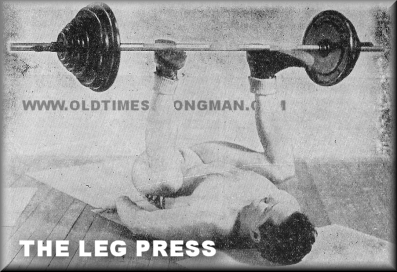It's not the Hamstrings Fault You Squat Like an 80-year-old Woman
I had a client, who for all intents and purposes, was pretty fit. He did Crossfit regularly (he pretty much made up batches of the Kool-Aid and fed it to everyone), and had an above average understanding of how the body moves during activities. He cam in to me because his hips and back were killing him whenever he did back squats, and he thought it was because he had tight hamstrings, and would spend about 15 minutes each workout stretching the crap out of them. I told him he was an idiot, and his choice of gym fashion was appalling. Them I told him why he should stop stretching his hamstrings for ever.
When I did a posture analysis on him, he was stuck with his hips rotated forward, slightly kyphotic stance, hips internally rotated, but his feet were in a neutral position. For those who have ever done kinetic chain assessments, the ankle will typically follow the hips in wherever they direct them to go, so if the hips are internally rotated, the ankles will commonly go into pronation to follow. This was a bit different, so I checked his knee, and sure enough he had a small degree of rotational torsion at the knee-joint that was compensating for the hip to keep his foot flat. An active straight leg raise brought his leg to 55 degrees above horizontal, but a passive straight leg raise brought his leg to past 90 degrees without any pelvic rotation observed.
When I checked his squat pattern, he had the tell-tale sign of a “butt wink” where the hips rotate posteriorly at the bottom of the range of motion. A lot of trainers immediately predispose this to having short and tight hamstrings, which was one of the areas this dude was feeling working the hardest on his squats, but if we look at his straight leg raise, his flexibility is fine, the hamstrings aren’t the problem.
So what was the problem? First, he was stuck in that pelvic tilt that was causing his hamstrings to hold the fort together because his back was stupidly weak and he was stuck in a flexion bias. Stretching the hamstrings was just going to make his hamstrings feel good. On top of that, when he did a forward bend he had a noticeable spinal hinge at L3-4 that was resulting in excessive mobility at one spinal segment and reduced mobility at all the others. Can we say Muscle Imbalances? On top of that, he had the classic squat with the weight through the heels, which only results in everything bad from all of history.
So to fix him up, I had him go through a series of extension and stability exercises that would help reduce the hinge, increase his pelvic range of motion to get him out of the lower cross, and get his back strong enough to handle the weights he was trying to lift. Here’s a sample of those exercises:
After a workout like this, he was able to squat his PR weight for a few reps, pain-free. I told him he no longer squatted like an 80-year-old woman with osteoarthritis, gave him back his man card, and he proceeded to punch the first inanimate object he could find, which happened to be my manager Doug.
The whole point of this little ramble is to say that our initial impressions of what we may think are the causative factor in painful situations may not actually be the problem itself, but just a symptom of the problem. It’s simply the tip of the iceberg.
Hamstring tightness is ridiculously common wherever you go, but working on treating the hamstrings is rarely going to fix the problem. WHy are the hamstrings tight in the first place? Is it because the spine is weak and the hamstrings are trying to compensate? Is it because the pelvis isn’t moving properly and the hamstrings again have to pick up the slack?
“Oh, but if the hamstrings are tight, they’ll pull on the low back and contribute to the back getting sore and injured, Dean.”
“Shut up and lift something. Now”
If the back is weak and the hamstrings are the only thing trying to keep it together, I have a novel approach.
….ahem….
Strengthen the back.
No amount of leg press, lunges, bicep curls or bench press are going to strengthen the back, especially if you’re doing leg press like this guy.
This is what Darwin was talking about the whole time. I love the way he even has the guts to keep his hands down by his sides the entire time. His doctor said he needed to eat more iron, but this probably isn’t what he meant.
Back injuries are pretty simple to work with if you follow a basic recipe:
1. What movements are causing the problem?
2. What movements make it feel better?
3. Where is the pain, and what structures are guarding to assist?
4. How active and healthy is the individual? (Note: the more active and healthy, the easier the fix)
5. Acute versus chronic? Most back injuries are chronic, with an acute incident that tipped it over the threshold of tolerance.
If a trainer doesn’t have the tools to be able to figure out where the pain is coming from, as well as whether it’s something they feel comfortable working with, they should be smart enough to send that client out to a physiotherapist or a chiropractor within their referral network to get worked on or at least a direction of what to do in the gym. “Training around the injury” rarely gets you anywhere, and more often than not will frustrate the client and make things worse down the road. Plus, you look like the pimp of the nation when you’re client throws another plate aside on his back squat after doing some sissy little exercises that they think are pretty useless, and you look at them and say “Word.”
Now say “word.” Feels good, don’t it?



4 Responses to It's not the Hamstrings Fault You Squat Like an 80-year-old Woman